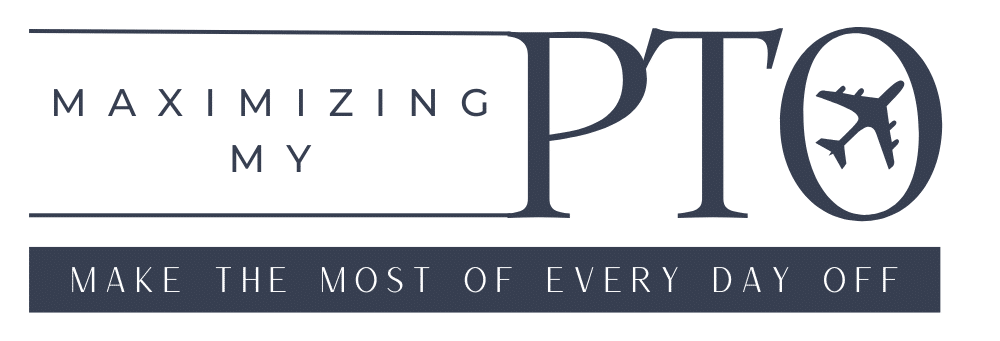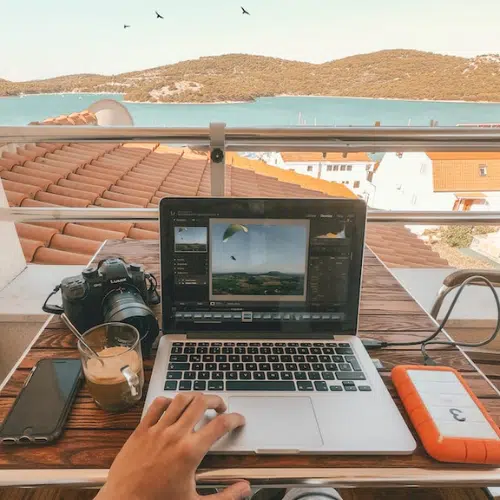How to Successfully Workation Abroad
Want to go abroad without taking any PTO? “Workations” are where you split your time between exploring new places and remote work. They are a key reason I am able to spend a quarter of the year outside of Chicago with a full-time job. I don’t travel for work in the traditional sense. Instead, I am able to blend work and play to see more of the world every year, while still succeeding in my career.
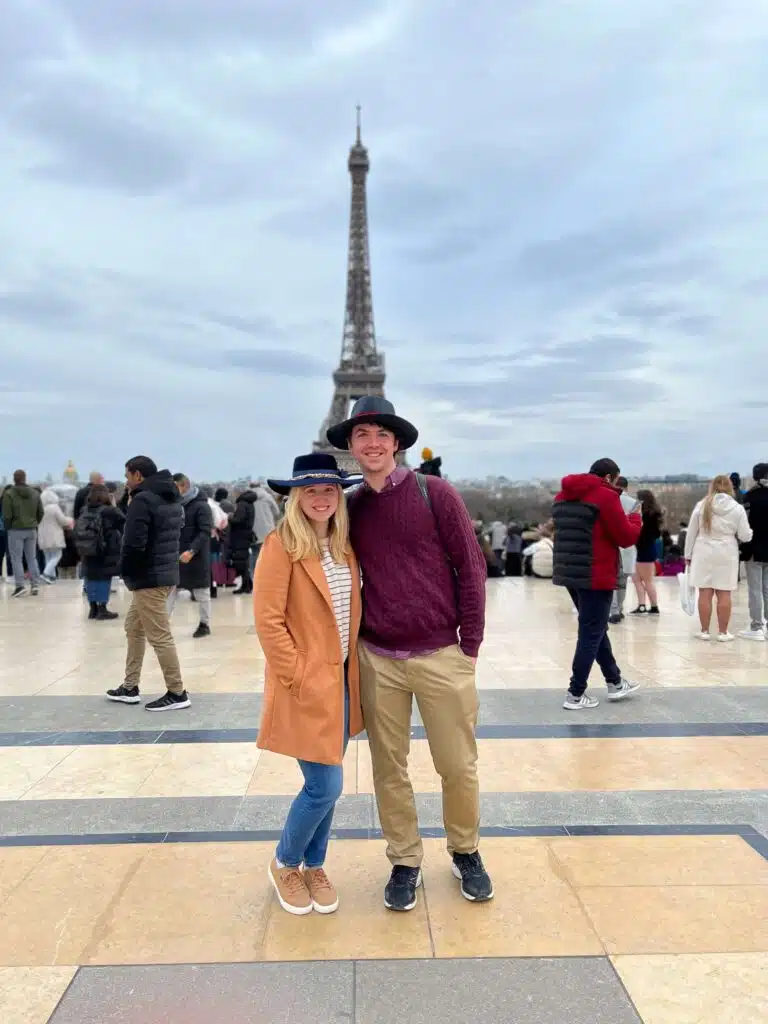
Last year Thomas and I worked remotely from San Diego, Los Angeles, Michigan, Austin, and New York. This year, we’ve pushed beyond the US borders. We’ve already worked from Paris and Portugal so far and have plans to work remotely from Denmark, Brussels, and Spain soon too. It is possible to be a great employee while abroad, as long as you’re prepared going into it.
I want to start off with a big caveat that this will not work for everyone. Your job has to allow you the flexibility to work remote at least occasionally in order to be able to work abroad. However, one good thing to come out of the pandemic was that a lot of employers are more flexible than they used to be, so there are more opportunities than before. For example, Thomas goes into the office 4 days a week when we’re home, but his boss is fine with him working remotely for a week here and there.
Here are the keys to take a successfully work remotely from another country and still explore the destination.
This post may contain affiliate links, which means I’ll receive a commission if you purchase through my link, at no extra cost to you.
Choose Your Destination Wisely
The constraints of your job are the #1 thing that will impact where you can go. For example, my company requires that we work 9AM-5PM on either Eastern Time or Central Time. This means I can work in a handful of time zones easily.
When I am in California, I work 7AM-3PM each day (keeping CT hours) and have the afternoons to myself. In Portugal, we explored every morning and worked 2PM-10PM (keeping ET hours). In Europe, dinnertime lines up with lunch in the US, meaning I’m able to cook up a quick meal just like I would for lunch at home in between calls.
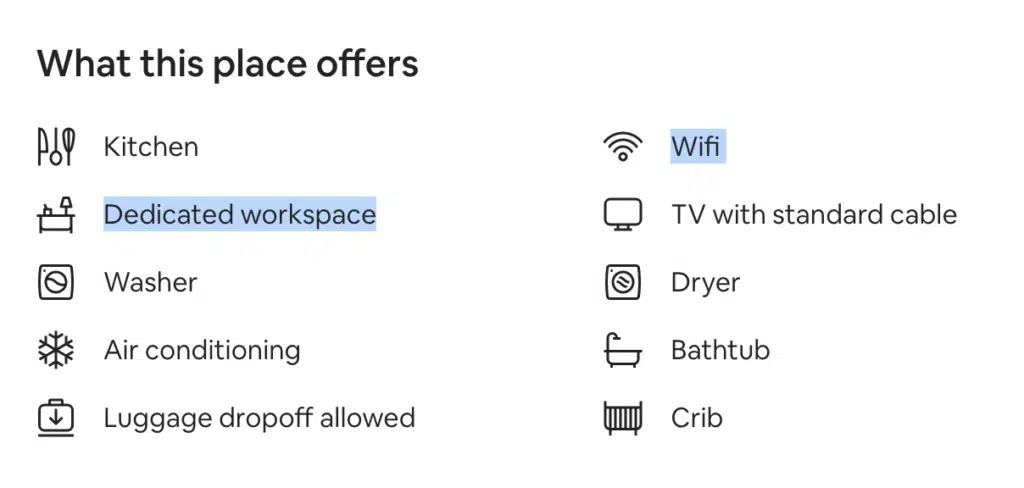
Also, remember that not every country participates in Daylight Savings Time. Those that do might change their clocks on different days, so plan accordingly.
WiFi is also a critical component to being able to work remotely, so I recommend sticking to cities so that you have good cell coverage, power, and reliable internet.
What to Look for in an Accommodation
If we are just working remotely for 1 day, we are fine booking a hotel room. For longer stays, we usually opt for Airbnbs to get more space for around the same price.
When booking an Airbnb to work in, I do a lot of searches and look for the following (beyond the basics like good reviews, air conditioning, a hairdryer, etc.):
Places for 2 people to Work
Whether that’s one big table or a couple different spots, I want to make sure that we will have a real workspace. I don’t want to have to work from the couch or bed. I do my best to see if the chairs will be comfortable to sit in for extended periods.
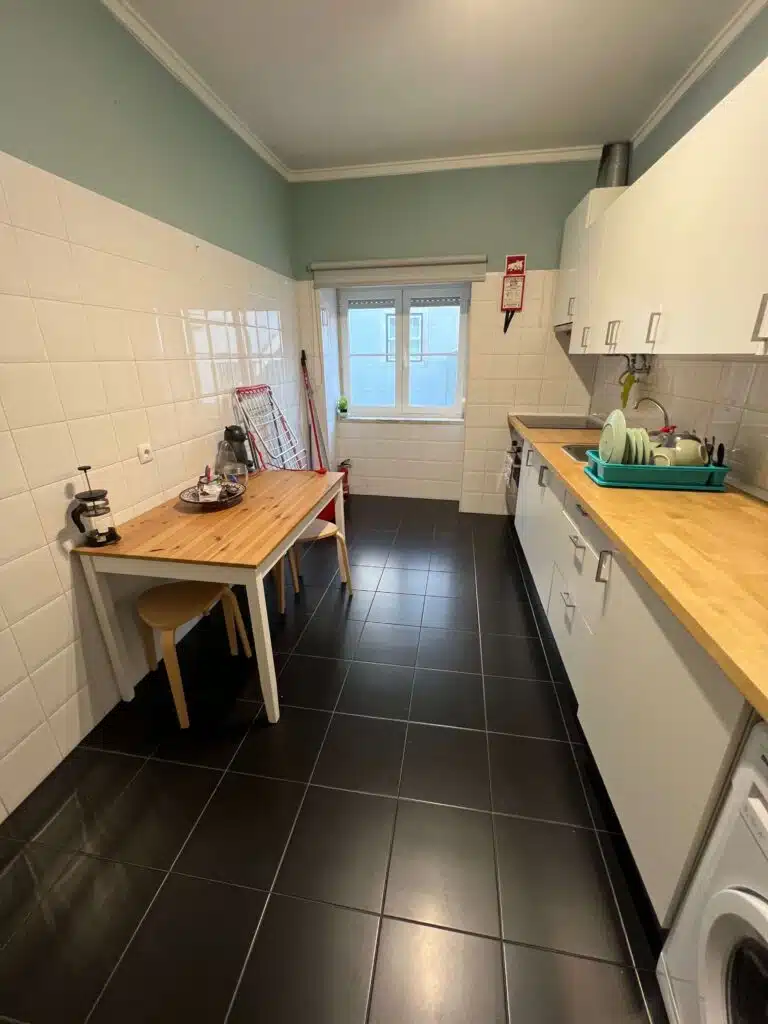
Fully Equipped Kitchen
A kitchen is important so we can make coffee and quick dinners. We make sure to go to the grocery store before our first workday so we have food.
Fast WiFi
I look for descriptions about WiFi strength and speed in the description of the listing and in reviews. Some Airbnbs also state “good for remote work,” which is helpful. Unfortunately, “good WiFi” is relative. One workaround we use when we have issues is to turn off our cameras on Zoom calls and turn WiFi off on any non-essential devices.
Rooms Separated by a Door
When Thomas and I are both on Zoom calls, we try to take them from separate rooms. In hotels this often means one of us is taking a call from the bathroom, but when I book Airbnbs, I try to find a better solution.
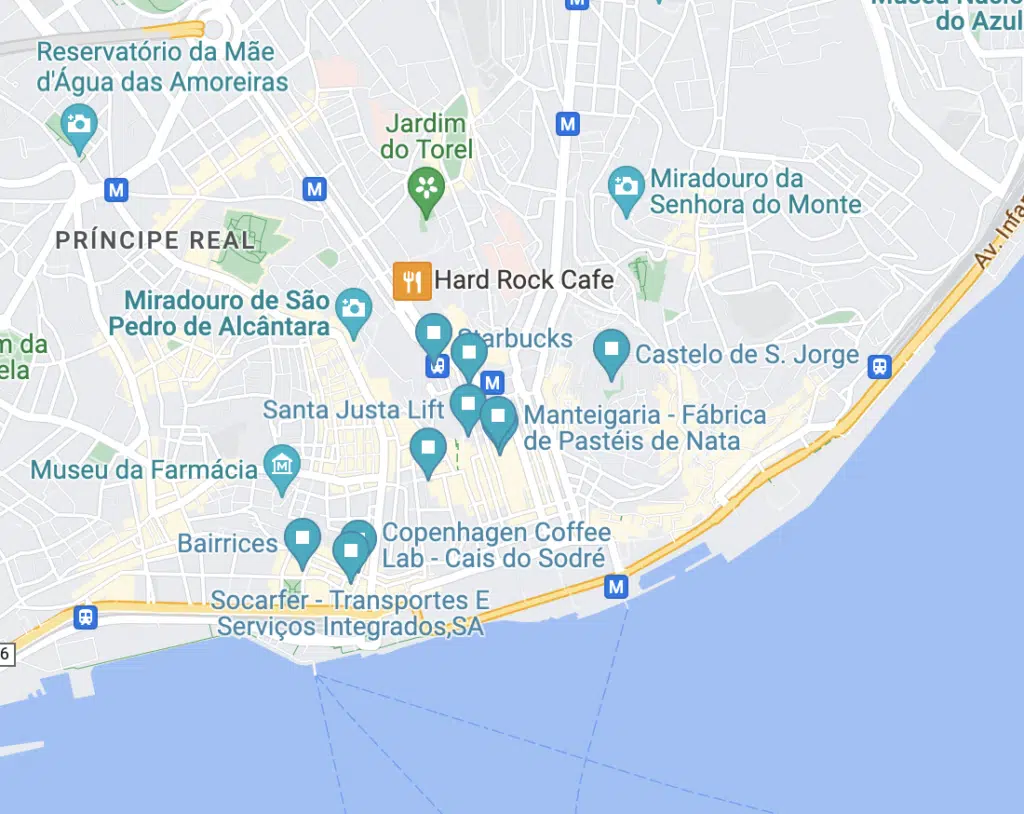
Close to the Sights
We have less time to explore each day, so it’s important to me to minimize transit time between places. I plan out what activities I want to do and then search for accomodations nearby.
Not every Airbnb we book has all the features I’m looking for, but we are flexible and make do with whatever we book.
Regardless of where you stay, be mindful of check in/out times and find other places to work if you need to. When we stayed at the TWA hotel, we had to check out at noon and worked the remainder of the day from the lobby. Having status or booking with certain credit cards can earn you late check out.
[RELATED: How to maximize points on Airbnb stays]
What to Pack to Work from Anywhere
The key to successfully working from anywhere is being well equipped. I try to have my travel setup mimic my desk at home as much as possible. Depending on the length of the trip or how tight I am on packing space, not everything may make the cut, but here’s what I like to bring:
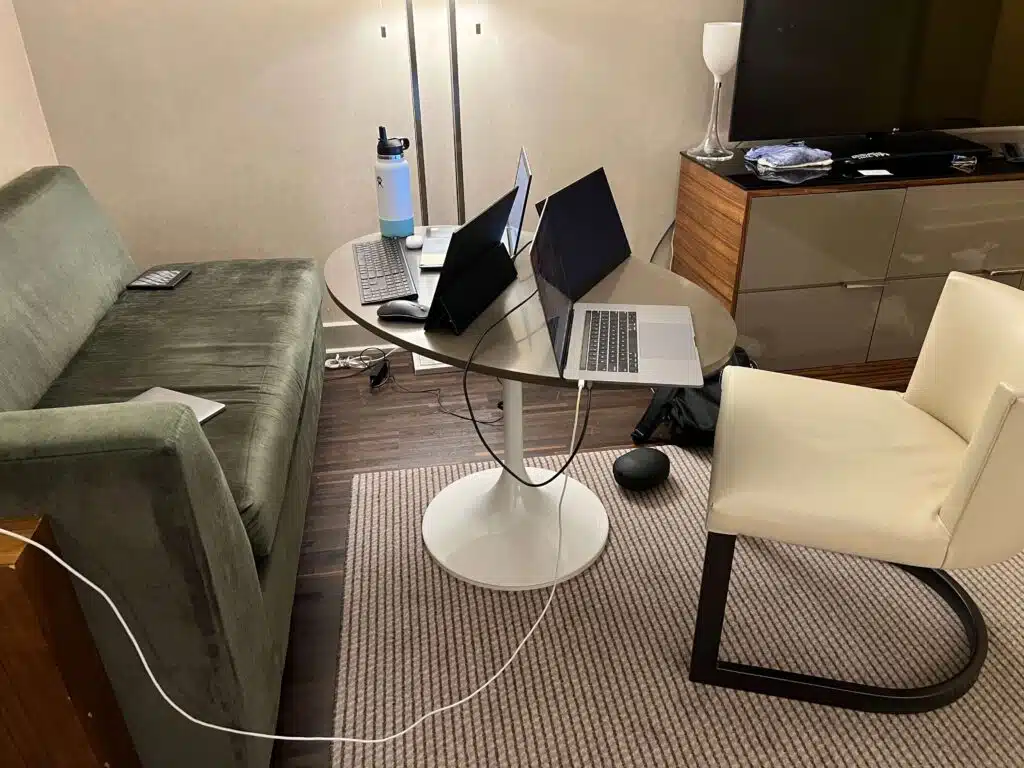
- My work laptop – unfortunately, I cannot use my personal computer for my job so I do travel with both laptops. Don’t forget its charger!
- Portable monitor – I have 2 monitors at home, so I’m used to working across screens. This portable monitor is perfect for travel and only uses one cord.
- Mouse – the trackpad on my work laptop is terrible, so I always bring my mouse. I just take the one off my desk at home.
- External keyboard – I have both a mini and full-sized external keyboard and bring one or the other depending on packing space.
- Portable WiFi – thankfully, I’ve never had to use this, but I bring this portable WiFi box in case I ever run into unusable connection. It’s pay-as-you-go, but a nice backup to have.
- Adapter for electronics – a must if you’re traveling internationally, this adapter has multiple outlets and USB ports to support all your electronics.
- Headphones – when Thomas and I are both working in a small space, the headphone are critical for work calls. I prefer these Bose over-ear headphones that have an optional cord that makes it easy to connect to my work laptop quickly.
- Notebook & pen – I take notes for work by hand, so I just make sure to bring my notebook along for uninterrupted workflow no matter where I go.
- Pour over coffee – working late into the night sometimes requires a caffeine jolt, so I always like to pack a couple of single serving coffees for a pick-me-up. All you need is hot water and a mug for excellent pour over coffee.
Example Destinations
Here are just a few examples of destinations you can consider working remotely from depending on your time zone. You can either work early and be done in the early afternoon or work in the evenings. Additionally, you can always work remotely from anywhere in North or South America and keep similar hours to your normal schedule. However, that might not leave you with much time to explore.
If you live in the Pacific or Mountain Time Zones:
- Hawaii or other Pacific Islands
- Brazil
- Argentina
If you live in the Central or Eastern Time Zones:
- The Azores
- Western Europe
- South Africa
I will also note that we are always very honest and up front about our plans and while we don’t submit PTO requests for these trips, we don’t try to hide where we are either. This allows for continual mutual trust between us and our employers.
Working remotely has really allowed us to stretch out PTO days further because not every trip requires days off! By getting to fill my soul with travel, I find that I’m able to be an even better employee because I’m showing up as my best self.
You may also like:
